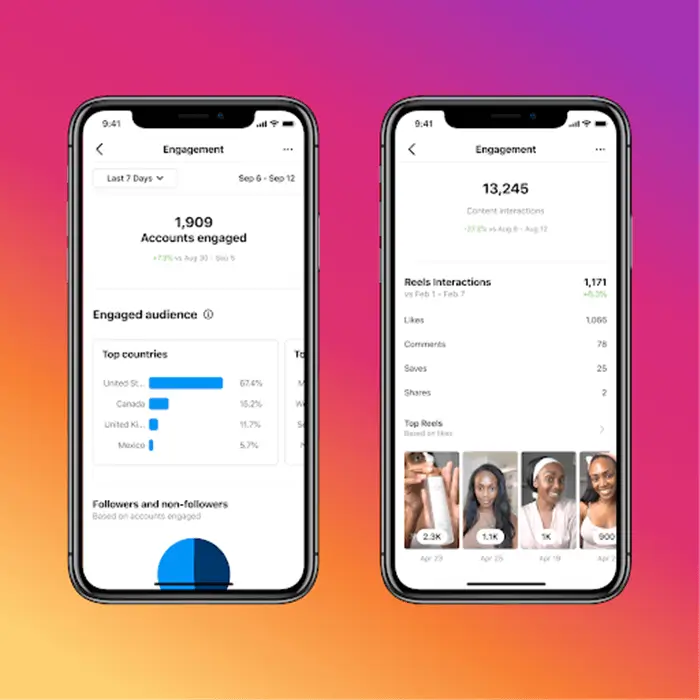How to find the best hashtags for instagram posts
Discover the ultimate Instagram hashtag guide to optimize your posts and boost engagement. Master the art of hashtag selection effortlessly.
To boost your visibility on platforms like Instagram, you need to use the right hashtags. When used strategically, hashtags can help you reach a wider audience, increase engagement, and promote your content effectively. Read on to learn how to find the best hashtags for your Instagram posts, including how to research hashtags, use them in your posts, and analyze their effectiveness over time.
First, let’s understand the importance of hashtags for visibility. Basically, hashtags act as keywords or labels that categorize your content. By adding relevant hashtags to your Instagram posts, you increase the chances of your content being discovered by users interested in similar topics. Whether or not users are searching by specific hashtags, Instagram’s algorithm uses hashtags to categorize and display your content.
The more relevant hashtags and key phrases you use in your caption, the more visibility your post will get! Just make sure that you don’t overdo it; avoid using irrelevant hashtags so that your content gets shown to its intended audience. After all, hashtags expand your reach beyond your immediate followers, helping you tap into larger communities on the platform. By choosing the right hashtags, you ensure that your content reaches an audience that will love your content!

Step 1: Identify Your Target Audience and Goals
Before diving into hashtag research, it's essential to identify your target audience and goals. Understand who you want to reach and what message you want to convey. Consider your niche, industry, or the specific interests of your followers. This will help you choose hashtags that align with your content and resonate with your desired audience!
Step 2: Research Popular and Relevant Hashtags
Start by brainstorming a list of potential hashtags based on your content and target audience. Then, use Instagram's search feature to explore popular and relevant hashtags related to your niche. Look for hashtags that have a high or mid-level volume. Consider using a mix of broad and niche-specific hashtags to reach a broader yet targeted audience.
For example, a girly clothing store might use a mix of hashtags like: #summeroutfit, #trendyclothes, #style, #fashion, #coquetteaesthetic, and #y2kaesthetic.
Take a look at what your competitors are using in their posts, but also take a look at what users are tagging in their posts related to your industry!
Step 3: Analyze Hashtag Performance
To evaluate the effectiveness of hashtags, consider using tools like Instagram Insights, which provides data on impressions, reach, and engagement. This will help you identify which hashtags drive the most engagement and which ones may not be as effective. Pay attention to the number of posts and engagement generated by each hashtag, and use this information to refine your hashtag strategy.

Step 4: Incorporate Hashtags into Your Posts
Once you've compiled a list of relevant and popular hashtags, it's time to incorporate them into your Instagram posts! Aim to use 10 to 15 hashtags per post, including a mix of general hashtags related to your content and specific hashtags that directly target your intended audience.
Hashtags can look messy in your caption, though. To prevent cluttering your caption, use hashtags in a comment under your post, instead. This way, you’ll be able to get the same exposure without looking spammy!
Step 5: Monitor and Adjust Your Hashtags
After using hashtags consistently, monitor their performance over time. Continually adjusting your strategy will ensure you continue reaching a wider, more relevant audience. If some hashtags are not driving engagement or attracting your target audience, replace them with more effective alternatives!
Step 6: Stay Updated with Trends and Evolving Hashtags
While many core hashtags stay the same, trends tend to change quickly. Regularly research and experiment with new hashtags to ensure your content remains relevant and visible. Make sure to keep an eye on trending topics, events, and industry-specific discussions that might offer opportunities to leverage popular hashtags and join conversations with your brand!
Hashtags are an integral part of Instagram's discovery algorithm and can significantly impact your visibility on the platform. By properly researching hashtags, using relevant and popular hashtags, and continuously evaluating their effectiveness, you can optimize your Instagram posts for greater visibility, engagement, and reach. Remember to stay adaptable and responsive to changes in trends and user behavior to maximize the potential of hashtags in promoting your content.
Happy posting!




